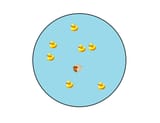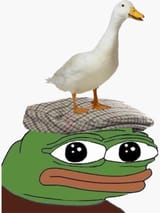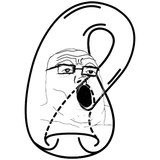There are seven ducks in a circular pond in random locations. The diameter of the pond is 100 meters.
You decide to throw a piece of bread for the ducks to eat. The bread will land in a random location into the pond. But if it lands more than 10 meters away from a duck, the duck won't hear the splash and it won't notice the bread. Otherwise it will come and eat it.
What is the probability that the bread will get eaten once you throw it?
You decide to throw a piece of bread for the ducks to eat. The bread will land in a random location into the pond. But if it lands more than 10 meters away from a duck, the duck won't hear the splash and it won't notice the bread. Otherwise it will come and eat it.
What is the probability that the bread will get eaten once you throw it?




